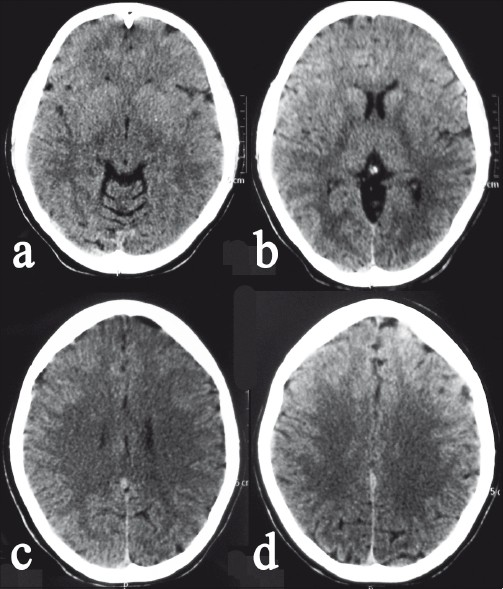Translate this page into:
Acute inter-hemispheric subdural hematoma in a Kabaddi player
Address for correspondence: Dr. Amit Agrawal, Professor and Head Department of Neurosurgery, MM Institute of Medical Sciences & Research, Maharishi Markandeshwar University, Mullana- Ambala, 133-207 (Haryana), India. E-mail: dramitagrawal@gmail.com
This is an open-access article distributed under the terms of the Creative Commons Attribution-Noncommercial-Share Alike 3.0 Unported, which permits unrestricted use, distribution, and reproduction in any medium, provided the original work is properly cited.
This article was originally published by Medknow Publications and was migrated to Scientific Scholar after the change of Publisher.
Sir,
Kabaddi is an Indian national game and is widely played in India. In the recent past it has been included in many national and international level sports competitions.[1] In spite of the wide popularity of the game, only few articles discuss Kabaddi related sports injuries.[23] A 16-year-old female player had a fall on her back three days ago while playing Kabaddi and her head struck the ground. She had transient loss of consciousness and also had multiple episodes of vomiting. Now she has presented with persistent headache, giddiness, and vomiting. Her general and systemic examination was normal. Neurologically she was conscious, alert, and oriented. There were no focal motor or sensory deficits. There was mild tenderness over the occipital region. In view of the persistent headache and vomiting, a CT scan of the brain was performed and it showed a thin, acute, subdural hematoma in the posterior inter-hemispheric fissure [Figure 1]. She recovered with conservative management and was doing well at the follow-up. The game of Kabaddi requires offensive as well as defensive skills that include pre-consideration of the raid, taking cant and entry, tracing the path, foot work, attacking tactics, and returning back.[1] These factors make the players prone to many types of sports-related injuries;[23] however, the paucity of literature regarding Kabaddi-related injuries emphasizes the fact that there is a further need to understand and analyze injuries related to this sport.

- CT scan brain, plain showing a thin posterior interhemispheric acute subdural hematoma.
References
- Kabaddi Specialization. Dharwad, Karnataka, India: Karnataka University of Dharwad; 1996.
- [Google Scholar]
- Isolated traumatic rupture of the adductor longus muscle. Indian J Med Sci. 1994;48:186-7.
- [Google Scholar]
- Injury incidence among kabaddi players during the two all-India level tournaments. J Indian Med Assoc. 1973;60:240-3.
- [Google Scholar]





